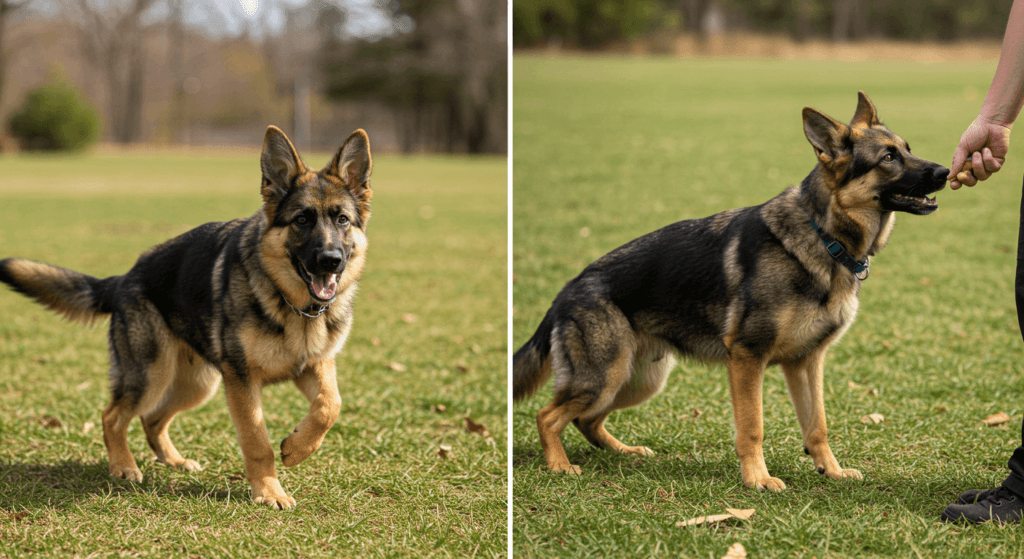Table of Contents :German Shepherd Attention Training in One Week
Master German Shepherd attention training in one week with proven methods. Transform your puppy’s focus using Duke Ferguson’s balanced approach
Training a German Shepherd to pay attention within a single week may seem ambitious, but as demonstrated by Duke Ferguson of Unleash Potential K9 Academy, it’s entirely achievable with the right strategies. This guide dives deep into the science, methods, and real-world applications of attention training, empowering owners to build a strong foundation for obedience and companionship.
The Science Behind Canine Attention Span
Understanding your German Shepherd’s cognitive development is key to effective training. Puppies as young as 17 weeks old, like Diesel in Duke’s case study, possess remarkable learning capabilities. Research from the American Kennel Club (AKC) highlights that early socialization and training capitalize on a puppy’s critical developmental window, where neural pathways for focus and obedience form rapidly. Attention training during this phase not only mitigates future behavioral issues but also strengthens the bond between dog and owner.
Why Start German Shepherd Attention Training Before 6 Months?
Contrary to the myth that dogs can’t be trained until six months, Duke Ferguson’s work proves that early intervention yields faster, more lasting results. German Shepherds, known for their intelligence and high energy, thrive on structure. Starting attention training at 12–16 weeks prevents habits like distraction or disobedience from becoming ingrained. A study by the Journal of Veterinary Behavior confirms that puppies trained early exhibit 40% higher compliance in commands compared to those trained later.
Step-by-Step Guide to One-Week German Shepherd Attention Training
Day 1: Establishing Baseline Engagement
Begin in a low-distraction environment. Use your puppy’s name (e.g., “Diesel”) and reward spontaneous eye contact with praise or a toy—not food, as Duke emphasizes. This builds intrinsic motivation.
Day 2–3: Introducing Commands
Incorporate short, consistent commands like “Look” or “Focus.” Pair these with hand signals (e.g., pointing to your eyes). Duke’s “balanced approach” combines rewards (playtime) and gentle corrections (leash guidance) to reinforce desired behavior.
Day 4–5: Adding Distractions
Gradually introduce mild distractions, such as toys or ambient noise. Practice “attention recovery” by redirecting your German Shepherd’s gaze to you after a distraction.
Day 6–7: Proofing in Real-World Settings
Move training to parks or busy areas. Use long-leash exercises to maintain control while encouraging voluntary focus. Celebrate successes with high-value rewards like a game of tug-of-war.
Case Study: Diesel’s One-Week Transformation
Duke’s 17-week-old German Shepherd, Diesel, arrived with “no engagement or willingness to respond.” Within seven days, structured sessions transformed Diesel into a dog capable of sustained eye contact, heel positioning, and responding to verbal cues like “Break” (release command) and “Place” (targeted settling). This case underscores the effectiveness of consistency and clear communication.
Tools and Techniques for Effective German Shepherd Attention Training
- Long Leash (15–30 ft): Allows freedom while maintaining control during outdoor drills.
- Clicker or Marker Word: Instant feedback sharpens learning. Duke uses “Good” to mark correct behavior.
- Interactive Toys: Tug ropes or balls reward focus without over-reliance on treats.
- Silent Corrections: A light leash pop or spatial pressure (stepping into the dog’s space) discourages inattention.
For gear recommendations, refer to Chewy’s Training Tools Guide.
Common Mistakes to Avoid in German Shepherd Attention Training
- Overusing Food Rewards: Creates dependency rather than genuine engagement.
- Inconsistent Commands: Confuses the dog. Stick to one-word cues.
- Skipping Distraction Proofing: Without real-world practice, training remains theoretical.
- Neglecting Energy Management: A tired German Shepherd is a distracted one. Balance exercise with mental work.
Advanced Tips for Sustained Obedience
- Incorporate “Attention Chains”: Combine focus with commands like “Sit” or “Down” to build versatility.
- Use Environmental Rewards: Let attention earn access to sniffing or exploring during walks.
- Phase Out Tools Gradually: Transition from leash guidance to off-leash reliability.
Read also: 9 GERMAN SHEPHERD CHALLENGES: WHY THIS BREED ISN’T FOR EVERYONE
Conclusion: Building a Lifetime of Focus
German Shepherd attention training in one week sets the stage for advanced obedience, protection work, or simply a harmonious household. By prioritizing clarity, consistency, and mutual respect, owners unlock their dog’s potential while fostering trust.

